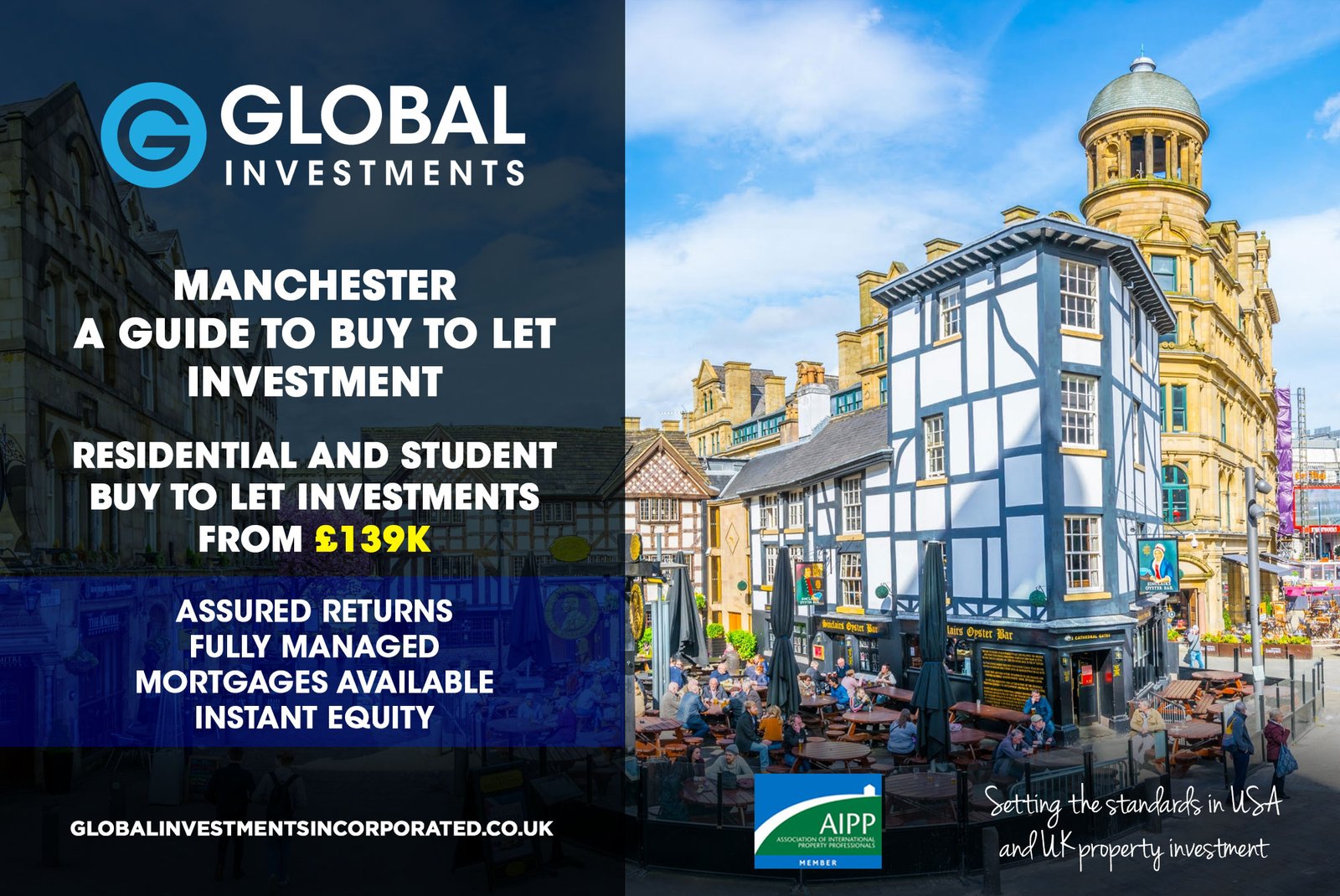
A guide to buy-to-let properties in Manchester
There is a growing consensus that Manchester is fast-becoming the second city of the United Kingdom. Ever since the BBC announced it was moving a huge portion of its broadcasting operations to Media City in 2011, Greater Manchester has grown to become a Northern capital worthy of its status as a business and cultural hub. From a property investment point of view, Manchester is very much a tale of two cities. The modern, contemporary new-build apartment and commercial complexes that pepper the city are balanced by areas which offer examples of best-in-class urban regeneration. Viewed very much as a key location in the industrial revolution, from an architectural point of view Manchester still retains many of the older, characterful buildings of its past. Repurposed as trendy loft spaces in former Victorian warehouses, the regeneration of Manchester’s Northern Quarter in particular has been a resounding success. In the process creating an aspirational market for city-centre living in a location rich with amenities, achingly cool eateries and a vibrant cultural scene. The problem with Manchester is not so much whether to invest in a city with so much opportunity, but where is best to invest to make a good long-term return. Early doors investors in decades old city-centre developments have been the big winners from long-term investment due to the rapid rise of the Northern Economy centred around the city. With both easy access to transport and an international airport close by, urban developments have quickly sprung up to service a growing financial, professional and creative workforce who choose Manchester as their home. House prices in Manchester have responded swiftly as a result – with current prices sitting at an average of £248,704 – 21% higher than the previous 2019 peak, according to Right Move. Although technically a rival city to Manchester, Salford in Greater Manchester has been a particular benefactor of the significant investment into commercial regeneration of the wider area. The creation of the Media City hub on Salford Quays and the subsequent relocation of several major BBC departments was a positive signal to the rest of the UK. A signal that not only was Manchester a place to do business, but traditionally London-centric industries could benefit from the change. For relocating staff it meant lower house-prices than they were used to in the South and a cheaper cost of living. But for Salford, it led to a 44% increase in house prices in just 5 years. The study by Xendpay found that between 2016 and 2021, Salford had one of the biggest increases in house prices in the Greater Manchester area – signalling that long-term regeneration had indeed had a positive effect on the area. With so many districts of Manchester performing well from an investment point of view, it does beg the question is there anywhere left for property investors to go? The answer is quite simply, UP! City-centre living remains enduringly popular amongst professionals and students alike, and that is certainly the case with some of the UK’s finest attractions and amenities on the doorstep in Manchester. Indeed, Manchester retains one of the biggest city-living populations in the UK. With the bohemian Northern Quarter now a thriving and aspirational area for young professionals and city dwellers – new areas of the city have started to spring up in investment circles as the next new hotspot for urban dwellers and property investors. Ancoats is one such area. A formerly grimy industrial hotspot, easy access to the city centre means Ancoats’ former warehouses are quickly being transformed into trendy apartments as well as newer build contemporary schemes. Similarly, neighbouring New Islington has the feeling of an up-and-coming area that has not quite hit the up yet. However, with some incredibly smart new build developments underway, it won’t be too long till the Northern Quarter will be fighting to retain its title of top trendy Manchester spot. Perhaps the most highly anticipated new development in the city, though, is Manchester Waters – the stunning new waterfront apartments, which promise to become a vibrant community for those who want easy access to both Media City and Manchester City Centre. Want to find out more about our Manchester developments or any of our other buy-to-let investment opportunities? Get in touch today invest@globalinvestmentsincorporated.com.

